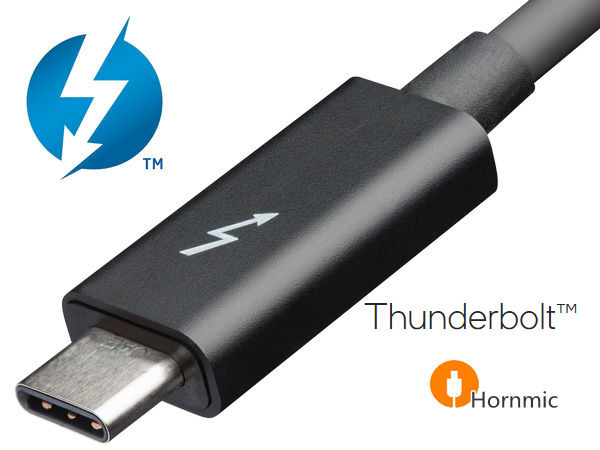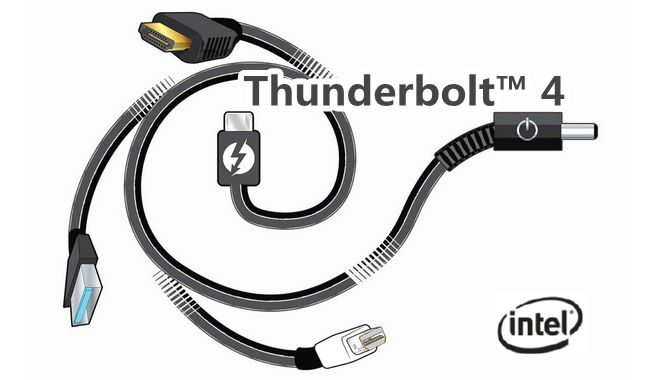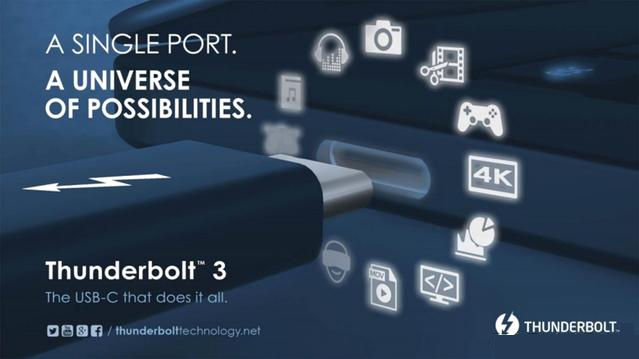intel雷电Thunderbolt接口介绍
发布日期:2023-09-20
点击次数:408

intel® Thunderbolt™ Port introduction
The Thunderbolt interface was first created in 2009 and was originally a high-speed I/O interface codenamed "Light Peak" by Intel Labs until 2011 when it was integrated into Apple‘s Mac devices in the form of a Mini DisplayPort (miniDP) interface.
Thunderbolt was originally developed to replace and unify the vast number of expansion interfaces on computers with varying performance, such as SCSI, SATA, USB, FireWire and PCI Express. Thunderbolt is a product of a partnership between Apple and Intel, developed by Intel and brought to market through a technical partnership with Apple.
The technology is primarily used to connect PCs and other devices, incorporating the first two proven technologies of PCI Express data transfer technology and DisplayPort display technology. Two channels can transmit data from both protocols simultaneously, with each channel providing 10Gbps bandwidth in both directions.
Thunderbolt is essentially just a technology protocol that needs to be parasitic on a specific interface standard, and miniDP is its first carrier.
Compared to traditional USB interfaces, the most important feature of Thunderbolt technology is that it is faster.

The development of Thunderbolt:
Thunderbolt 1 technology has a transfer rate of 10Gbps, and up to four devices can be connected in series, while the USB3.0 with its contemporaries only 5Gbps.
Thunderbolt 2 appeared in 2013, USB-IF (USB promotion organization) released USB3.1 technical specifications, it was difficult to raise the theoretical transfer rate to 10Gbps, Intel has joined hands with Apple to launch Thunderbolt2, still using the miniDP interface, but the transfer rate has doubled to 20Gbps.
Thunderbolt 3 was born in 2015, and with the advent of the USB Type-C interface standard, it was soon used by the latest Thunderbolt3 technology. Thunderbolt3 is definitely USB Type-C, but USB Type-C does not necessarily support Thunderbolt3. In addition, the Thunderbolt3 is also compatible with various multimedia transmission protocols you are familiar with, can be extended to almost any interface, and can even be used to connect to external graphics cards.
The war between Thunderbolt and USB finally saw the light of day in 2019. In early March of that year, Intel opened the Thunderbolt technology protocol to the USB-IF organization, which has since released USB4, which implements the integration of Thunderbolt and USB protocols at the bottom to enhance compatibility between products based on the USB Type-C interface.
Thunderbolt 4 can be considered as "full-featured USB 4.0", which not only needs to have a full speed of 40Gbps, but also needs to be compatible with both USB PD charging and Thunderbolt 3‘s full functionality, better performance in video output capability (supporting dual 4K displays), cables used and security are with higher certification requirements.

Thunderbolt™ 4 Features and Benefits
Thunderbolt™ 4 offers distinct advantages over USB-C with a more flexible and expansive set of capabilities. Productivity, content creation, and gaming applications can all benefit from Thunderbolt™ 4 technology with cleaner workspaces and more bandwidth to support more accessories.
Power, Data Transfer, and Video Display in One
Thunderbolt™ 4 ports and cables support the trifecta of power charging and data transfer with bidirectional movement and video display in one interface. For example, with a Thunderbolt™-enabled laptop, display, and cable, the laptop can pass a video signal to the monitor and the monitor can charge the laptop at the same time. Thunderbolt™ 4 delivers:
• High bandwidth: 40 Gbps of bandwidth dynamically allocated for data and video, ideal for heavy workloads or fast file transfers.
• Quick charging: Up to 100W of power for laptop charging and up to 15W for computer-powered accessories.
• Rich display options: Up to two 4K 60 Hz displays or one 8K 60 Hz display on a single connection1.

Faster Data Transfer
The Thunderbolt™ 4 standard requires a total bandwidth of 40 Gbps, which it dynamically allocates between data and video for all devices on a single connection. Compared to the variable speeds of USB4, this requirement ensures that connections are always delivering peak file transfer speeds to support productivity, gaming, and content creation.
Daisy Chains, Hubs, and Docks
Connect multiple Thunderbolt™ devices together in a daisy chain. Data, power, and video signals can flow from the computer and down the chain into five additional accessories. Also connect multiple devices into a Thunderbolt™ hub or dock that can be plugged into a Thunderbolt™ computer to consolidate all accessories into a single connection.
External Graphics, Storage, and PCIe Enclosures
The high bandwidth of Thunderbolt™ 4 allows end users to connect their computers to external GPUs, storage drives, and PCIe enclosures. PCIe connectivity is not supported by USB 3 and is optional for USB4, whereas Thunderbolt™ 4 offers the most flexibility in which devices you can connect.
But Thunderbolt is not widely used in practice, Why?
Only a small number of high-end notebook computers, only equipped with Thunderbolt3 interface.
For notebook manufacturers, the Thunderbolt interface is costly, and there is no need to force installation when the scope of application is not large; For software and peripheral manufacturers, the Thunderbolt interface is not very popular, and there is no need to develop more products and features for it. Ultimately, it‘s the status that the Thunderbolt interface is too expensive and serves no great purpose.
The emergence of USB4 will also take away a lot of market share that should have belonged to Thunderbolt 4, because USB4 requires less cost.
When devices equipped with the usb4 protocol start to become popular, we will be able to achieve the need for high-speed expansion at a cheap price.

By HornmicLink_Bob Kuo @230920 10:12











